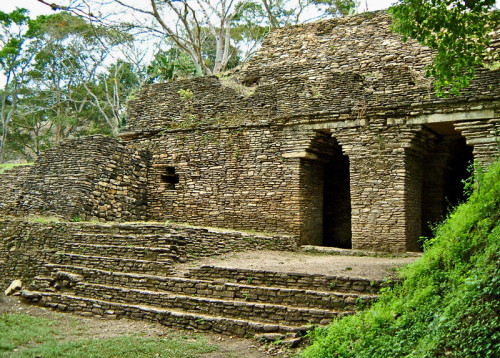 Palace of the UnderworldThe Palace of the Underworld, or Palacio del Inframundo, at Tonina is a labyrinth of 11 vaulted passageways that are accessed through the three distinctive corbelled doorways on the first tier of Tonina’s incredible seven tiered pyramid acropolis. Constructed as early as 500AD, the Palace of the Underworld’s maze of tunnels feed directly into the heavily modified hillside to create a cold and darkened complex that would best be described as a catacomb. Similar complexes are found at the nearby Mayan ruins of Palenque and Yaxchilan and are thought to be spiritual spaces dedicated to the reviving the spirits of the dead. Within these dark eerie spaces, Mayan Lords and High Priests would contact the city’s ancestors through by burning incense and taking psychoactive stimulants to produce an enlightened, hypnotic and often hallucinogenic state that induced visions and communication with the deceased. Practitioners would also perform auto-sacrifice, or blood-letting, which would involve painfully puncturing a soft part of the body, such as the penis, ear or tongue, and then letting it bleed into a receptacle. The incisions were made using thorns or stingray spines and the pain and loss of blood would help heighten the visionary state.
Palace of the UnderworldThe Palace of the Underworld, or Palacio del Inframundo, at Tonina is a labyrinth of 11 vaulted passageways that are accessed through the three distinctive corbelled doorways on the first tier of Tonina’s incredible seven tiered pyramid acropolis. Constructed as early as 500AD, the Palace of the Underworld’s maze of tunnels feed directly into the heavily modified hillside to create a cold and darkened complex that would best be described as a catacomb. Similar complexes are found at the nearby Mayan ruins of Palenque and Yaxchilan and are thought to be spiritual spaces dedicated to the reviving the spirits of the dead. Within these dark eerie spaces, Mayan Lords and High Priests would contact the city’s ancestors through by burning incense and taking psychoactive stimulants to produce an enlightened, hypnotic and often hallucinogenic state that induced visions and communication with the deceased. Practitioners would also perform auto-sacrifice, or blood-letting, which would involve painfully puncturing a soft part of the body, such as the penis, ear or tongue, and then letting it bleed into a receptacle. The incisions were made using thorns or stingray spines and the pain and loss of blood would help heighten the visionary state.
The Palace of the Underworld as a Supernatural Cave
As well as acting as a portal to the spirit world, the Palace of the Underworld also represented the supernatural cave from which the first humans were believed to have been born. It is thought that temple enclosures throughout Mesoamerica were constructed to act as manifestations of this primordial cave and provided a gateway to both ancestral spirits and the Gods or, more commonly, the Goddesses of the Earth.
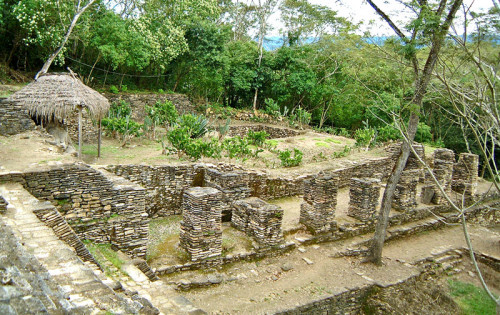
Palacio del Inframundo Above the Palace of the Underworld’s labyrinth of corridors is a temple enclosure with seven doorways. It is quite probable that this upper structure interplayed with the religious rituals performed in the Palace of the Underworld, acting as an upper level or representing the physical world in which we live. The number seven often represents the cosmos, for this is the number of celestial bodies that were visible within our solar system without the aid of a telescope. The number seven can also relate to the pleiades, which appears as a cluster of seven stars to the naked eye. There is some speculation that the pleiades were considered to be the birthplace of the God’s or the navel of the Universe in Mesoamerican mythology. On a more earthly note, their disappearance from the night sky in spring was probably used as a signal to start sowing the annual crop. Regardless of the reasoning for the seven doorways in this upper temple, it is likely that it represented an upper level of the underworld, the next obstacle of the underworld (after the labyrinth), or the world of the living into which the dead ancestors would arise during rituals.

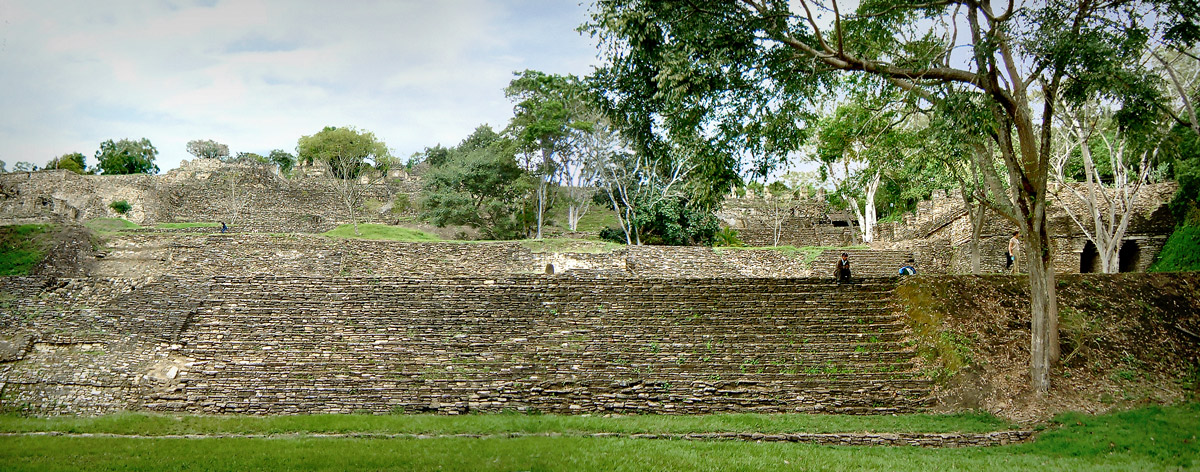
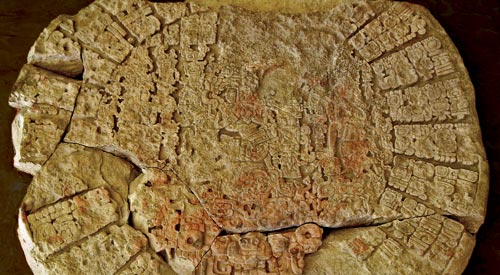
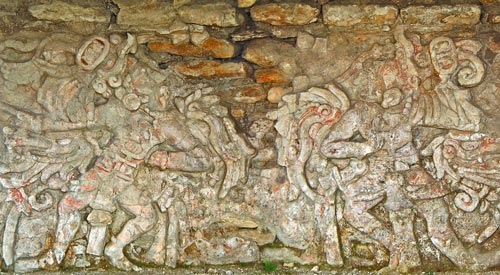
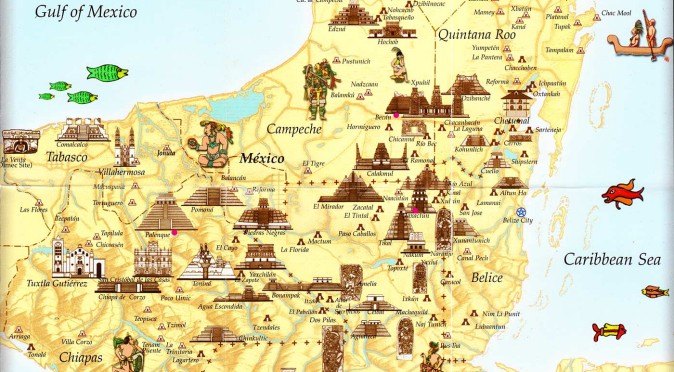
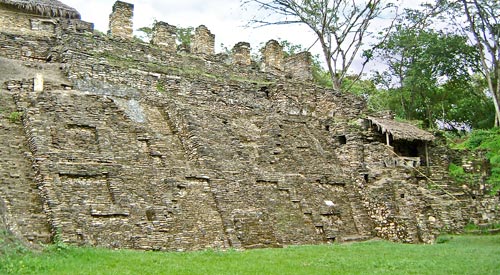
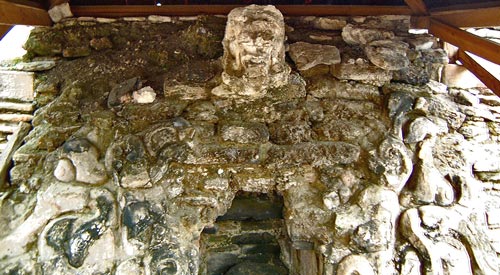
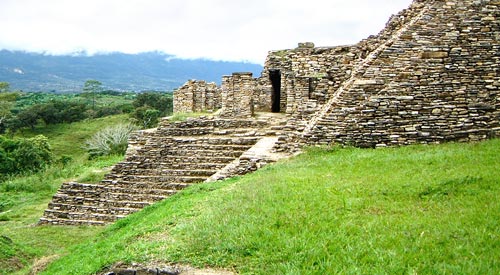
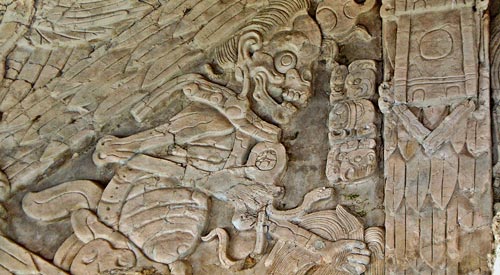
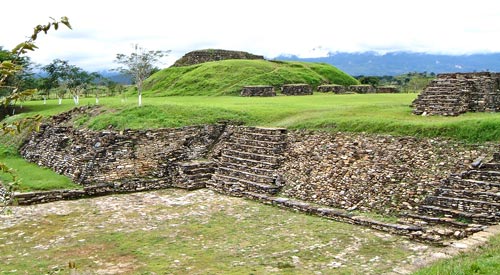
This is a great post! I was in Tonina a couple of years before and walked through one of the tunnels, wihout knowing much about it. Thanks for the information. Are you aware of some local legends or myths regarding these tunnels or Tonina itself? I think to remember that the locals believed that the tunnels would reach as far as Palenque. But I am not sure about this.
Hi Crischo, Thanks for the lovely feedback. In answer to your question, no, I do not remember that story. However, I remember a hearing a lot of fascinating legends that the locals would retell as I travelled around. Despite sounding far-fetched from an historical or scientific point-of-view, they made perfect sense. Because many of their feats were “unbelievable”, even to us now, it makes it is possible to believe in the unbelievable – and this we can assume was their motivation for building such awesome structures and creating a calendar that could predict seemingly unknowable celestial apparitions. A tunnel from Tonina to Palenque is as impossible as it is pointless, but one could say the same about building a 70m high, seven tiered pyramid in the middle of the jungle, that supported 13 temples and is riddled with tunnels – but they did it anyway… 🙂
The number seven can also relate to the pleiades, which appears as a cluster of seven stars to the naked eye. There is some speculation that the pleiades were considered to be the birthplace of the God’s or the navel of the Universe in Mesoamerican mythology. i am agree about labyrinths of chiapas and thanks for this post, it can helped me before 🙂